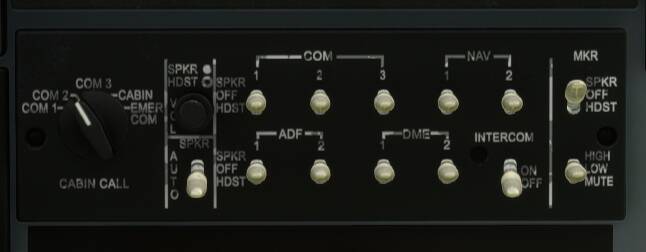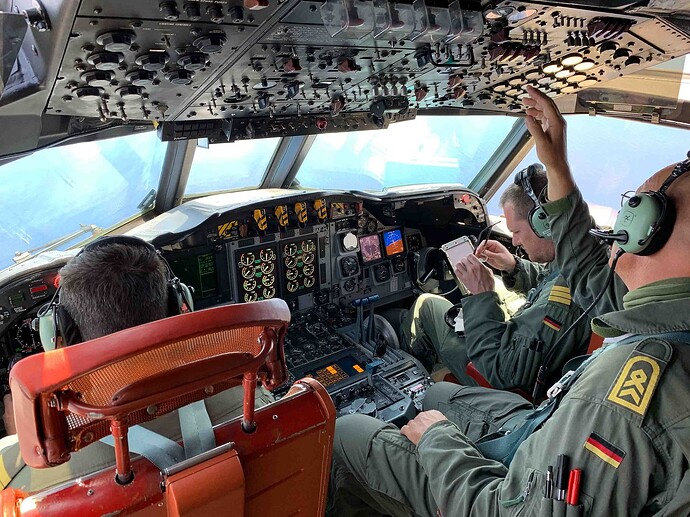Correct, this does not work yet. The dev posted on their discord this requires WASM to get correct, so it should be made available in an update sometime after the SU12 release.
Thanks for the response!
Looks like the recent update to the Marketplace version has disabled 3rd party liveries for the 414. Although these same liveries continue to work for people with the downloaded version like myself. So the marketplace version and the downloaded version are no longer the same.
In the past Flightsimware changed the aircraft ID from “flysimware_Cessna_414A” to “flysimware_Cessna_414AW”. The “W” added to this ID severed the link between the liveries and the source aircraft, causing all liveries to disappear. The fix was for livery creators like myself to update the livery to use the newer value of “flysimware_Cessna_414AW”.
I am wondering if the Marketplace verison of the 414 now uses a different ID or perhaps even reverted to the old “flysimware_Cessna_414A”. As I don’t use the Marketplace verison I can’t check this myself.
Could someone with the marketplace version have a look at the base 414 install and see what folder name appears in the Airplanes folder of the 414 please?
I am not familar with the stucture used by the marktplace verison but it will be something like this:-
\Official\flysimware-cessna-414aw\SimObjects\Airplanes\flysimware_cessna_414AW
Its the last part of this folder name that liveries use to connect to the source aircraft.
Not entirely true, some aircraft have an electrically driven auxiliary motor that can be operated without the engines running to drive the blades to feather through input of an emegency shut down handle “E Handle” or a feather button. The feather button can be used to check blade angles on the ground during maintenance checks and to feather the number 1 engine for loiter in flight to extend the aircraft’s endurance. Once the engine is required to be restarted, the feather button will be pushed, powering the electrically driven auxillary motor, which will drive the blades to the air start position causing the airflow to start rotating the propeller prior to the fuel and ignition switch being turned back on. .
This is the case with P3 Orions, C130s and Lockheed Electras to name but a few. In the photo you can see the emergency shutdown handles under the glare shield and the feather buttons under the clear covers up the top near the Flight Engineer’s hand.
Interesting info… but… I referenced a relationship between the prop-control and blade-pitch - while engine not running… and closed the post… "
In what direction will you be looking when flying? ![]()
Marketplace folder structure is named differently:
…\Official\Steam\flysimware-cessna-414aw\SimObjects\Airplanes\flysimware_aircraft_414AW
(download version folder name: flysimware_cessna_414AW)
If you have this plane from Marketplace and wish to use third-party liveries you must edit two files for each livery in your Community folder (DO NOT MODIFY OFFICIAL FOLDER CONTENTS):
- Edit “…\Community\CustomLiveryName\SimObjects\Airplanes\CustomName\aircraft.cfg”
- Edit “…\Community\CustomLiveryName\SimObjects\Airplanes\CustomName\TEXTURE…\texture.cfg”
Replace text in each file to reflect the location of your plane. (e.g. I replaced all folder references to “Cessna” with “aircraft” in one of my liveries)
The important bit is the same as the Community version. My emphasis below:
D:\Flight Simulator\Community\flysimware-cessna-414aw\SimObjects\Airplanes\flysimware_cessna_414AW
Audio Panel Switch Assignments (COM2)
I’m trying to assign a switch to enable the COM2 audio output. Using FSUIPC and don’t see a preset for the 414. When I assign the FS input “COM2 Receive Select” that doesn’t work. Any help would be appreciated
Try the LVAR “GENERIC_Momentary_COM2_AUDIO_SWITCH” instead. Has the following values:
0 = HDST
1 = OFF
2 = SPKR
I just tried communicating with ground, and it didn’t seem to matter which position that switch was in, I could still hear them.
Tuned in to ATIS, so I have constant chatter, the “CABIN CALL” rotary, switching to COM1 causes the audio to stop completely, 2 starts it again, COM3, CABIN, and EMER COM don’t appear to do anything at all. Similarly the COM 2 three pole switch doesn’t appear to do anything at all but is animated. It would have been cool to have an audio effect applied when set to SPKR instead of HDST. Like it sounds normal over the headset, but over SPKR it would sound maybe a little less tinny because of the larger speaker diaphragm, something like that.
The small Vol rotary does work, though both the inner, and outer control do exactly the same thing, so there is no distinction between SPKR, and HDST. I would have thought that at least COM2 OFF would have the desired effect, but no.

There also seems to be no way to switch COM2 from 25KHz to 8.33KHz spacing.
Excellent video, very instructive: Cessna 414A Chancellor full review | 21,000 flight | Single engine approach | Your mini airliner - YouTube
Great thanks. I’ll pass this on to users of my liveries with the marketplace version.
Yeah, but it does control/adjust prop pitch while the engine isn’t running, that’s how the blade angle is driven to the air start position. It’s also how the blades are driven to feather prior to the propeller being removed and the maintenance crew carrying out Blade Angle Readouts and adjustments when the propeller is installed.
The way I see it the important bit is not the same between the 2 versions. Because the bit that is different is critical for establishing a link between a livery and the source aircraft.
The downloaded version uses
\Community\flysimware-cessna-414aw\SimObjects\Airplanes\flysimware_Cessna_414AW
While I am told the marketplace version uses
\Official\Steam\flysimware-cessna-414aw\SimObjects\Airplanes\flysimware_aircraft_414AW
The important bit for a livery is the folder structure name that appears after “Airplanes”. It is this name that links liveries to the source aircraft. Having 2 different versions means liveries will only ever work for half the people.
You are absolutely right! I was completely word blind to that for some reason, and didn’t see the “cessna” “aircraft” switch.
What I would do in that case is create a junction point there, with the name of what the livery is expecting that points to the other folder.
So if I do the same for my plane, but the other way round to what you would want:
cd "D:\Flight Simulator\Community\flysimware-cessna-414aw_3.4.4\SimObjects\Airplanes\"
mklink /J flysimware_aircraft_414AW "D:\Flight Simulator\Community\flysimware-cessna-414aw_3.4.4\SimObjects\Airplanes\flysimware_cessna_414AW"
So in that folder I now have two “folders” one real, the other a junction point.

Both paths are valid, and that should be enough to get the livery working I expect.
The command you would run would be the other way around, so create a link to a “cessna” folder, rather than “aircraft”. And obviously the correct path in your Steam folder.
Flysimware have responded to me and advised that there is a fix done that is just waiting for Microsoft to publish. So hopefully this problem will be short lived.
My biggest complaint with this plane is the complete lack of prop drag. I simply can’t slow down in this plane. Also, I’ve noticed you can easily run out of elevator authority during the landing flare if you’re not trimmed properly. This is extremely dangerous and I doubt this is a feature of the real plane?
As far as I understand, the behaviour is true to life.
The trick is to fly level at 27 MP. This should keep the speed at 170 knots. At this speed, the first notch of flaps can be deployed and landing gear lowered. The plane should now slow down to 140 knots or so because of the increased drag. At this point the second notch of flaps can be deployed, further slowing the plane down. At full flaps, the speed should be at the blue line, which is perfect for landing. You might even have to increase the power a little.
With this technique, which I believe is how it’s done in the real airplane, you actually barely need to touch the throttle before you flare just before touchdown. It’s pretty cool!
Check this from 10:05
I highly doubt this can be true to life as prop drag is completely missing and the plane is pretty much behaving like a jet. Never flown a twin that simply won’t slow down. In real life, drop drag is quite significant and reducing the power to idle in cruise would result in a significant pitch down. Never flown this particular plane in real life, but something is off in this regard. Power should be slowly reduced to idle just before the flare. The only planes landing with positive power are turboprops.
Other than this I really like this plane, but the prop drag issue and the lack of elevator authority during the landing flare need to be looked at.
I found these two values in the SDK:
https://docs.flightsimulator.com/html/Content_Configuration/SimObjects/Aircraft_SimO/engine_cfg.htm
[PROPELLER]
| Parameter | Description |
|---|---|
| prop_mod_lift_efficiency_cf | This is the propeller surface induced drag coefficient. |
| Default value is 0.5. | |
| prop_mod_zero_lift_drag_cf | This is the propeller surface based drag coefficient. |
| Default value is 0.01. |
Has anyone played with these two see what effect they have?
The 414 doesn’t even have modern prop physics enabled, and these values require this first.
| Parameter | Description |
|---|---|
| prop_mod_use_modern | When set to 1 (TRUE) the simulation will use the modern version of the propeller model, instead of the legacy version. This means that the parameters prefixed by prop_mod_* will be used instead of - or in addition to - the equivalent parameters to determine the behaviour and effects of the propellers on an aircraft. |
| Default value is 0 (FALSE). |
Posted my findings to another thread more relevant to this specific topic. Those interested can continue this line there:

